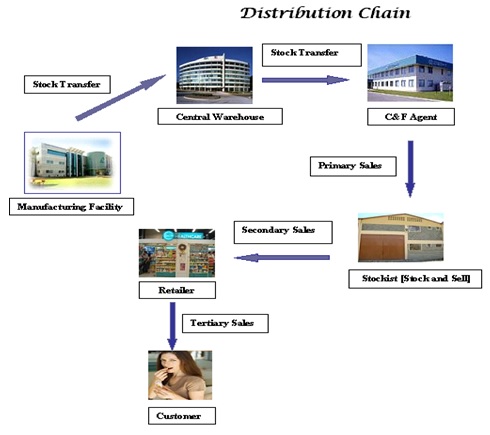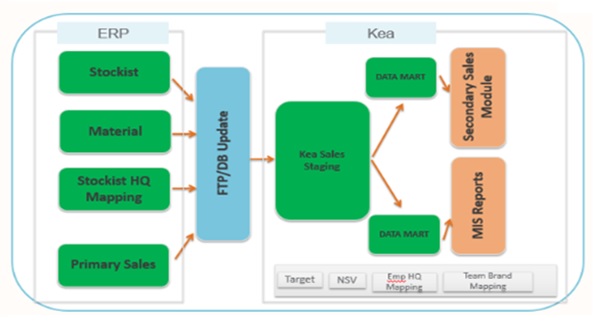1. What is Sales MIS?
Sales MIS reports are used to track and analyze a company’s sales. They can include information such as sales volume, sales by region, sales by product, etc.
Though sales data is available in ERP system, it is not possible to give access to all the field users. Also, not many companies maintain employees master and mapping information in ERP, so showing the right data to the right person is not easy in ERP.
A warehouse once created for Sales can also be expanded to include efforts, market-share, incentive generation and more.
2. Sales MIS
A company with an MIS system can automate all relevant processes like data collection, organization, documentation, and report generation for optimal analysis by using MIS automation engine.
The MIS Sales Analysis module provides the business owner and managers with valuable customer, salesperson, and company performance statistics. The statistics will allow you to spot trends and preferences that will help you better manage your business, customers and sales force.
When it comes to Sales MIS data involves Primary and Secondary Sales.
In a typical distribution set up of a Pharma company, primary sales are the sales invoiced by the C&F Agent to a stockist; Secondary Sales is sales from stockist to the retailer.
The following Diagram illustrates the Distribution Chain

Sales from the retailer would become tertiary sales.
Primary Sales gives information regarding the sales to Market and Secondary Sales gives information regarding sales in Market. Tertiary data which is a drill down further of in Market Sales, is very difficult to get.
3. Sales MIS Architect Diagram
WAREHOUSE FLOW DIAGRAM

4. Sales MIS Automation Process
4.1 Primary Sales
Primary sales data will be sourced from ERP like SAP, Oracle Financials, Tally etc. The integration methods can be various as follows:
- SAP API Integration
- Flat file interface through SFTP
- Excel upload – front end interface
- Direct DB tables integration
- Robotic Process Automation
Sales Using any of the above integration methodology, data is pulled into Staging area. After completion of validations, following mapping are applied to the data to create the required relationship
- Brand SKU mapping
- Distributor HQ mapping
- Area HQ mapping
- Division Brand
Data is aggregated at different levels and then published to the field users.
4.2 Secondary Sales
Source for Secondary Sales data is the Stockist. The different stockist provides stock and sales statement which typically contains opening stock, receipt, Closing and Sales. Usually, the data is collected once a month from the stockist and flows into the MIS system for collation and analysis
System will calculate the secondary sales based on below information,
- Opening balance – Previous month closing stock
- Receipt – Primary sales data which mentioned in the previous section
- Closing stock – which will be uploaded by sales rep
- Secondary sales = Opening balance + Receipt-Closing stock
Though entire primary sales are usually treated as receipt provision can be provided to handle GIT. The primary sales invoices which have not yet reached the stockist can be unchecked so the same is deducted and remaining shown as GIT. Have Secondary sales data also captured from the stock and sales statement. The difference between calculated SS and the SS as per statement will be GIT.
Apart from knowing the movement of the company’s brands in the market, the closing stock is a good measure of days of inventory with the stockist. This information can be used to ensure goods are moved before shortage of stock with the stockist
4.3 Sales MIS Reports
After all processes are completed then sales data will be published and will be available in the following reports,
4.3.1 Sales Dashboard – this will show summary of sales
- Top 10 Brand sales
- Sales Achievement & Growth
- Sales Dashboard – Last Year sales, Plan, Actual, Target Achievement %, Growth %, Secondary sales & PCPM
- Target Achievement % – Monthly, Quarterly & Yearly
- Brand wise sales graph
- Primary vs Secondary
- Days of Inventory
Author
Palani Kumar
Associate Director, Product and Projects
VSM Software Private Limited